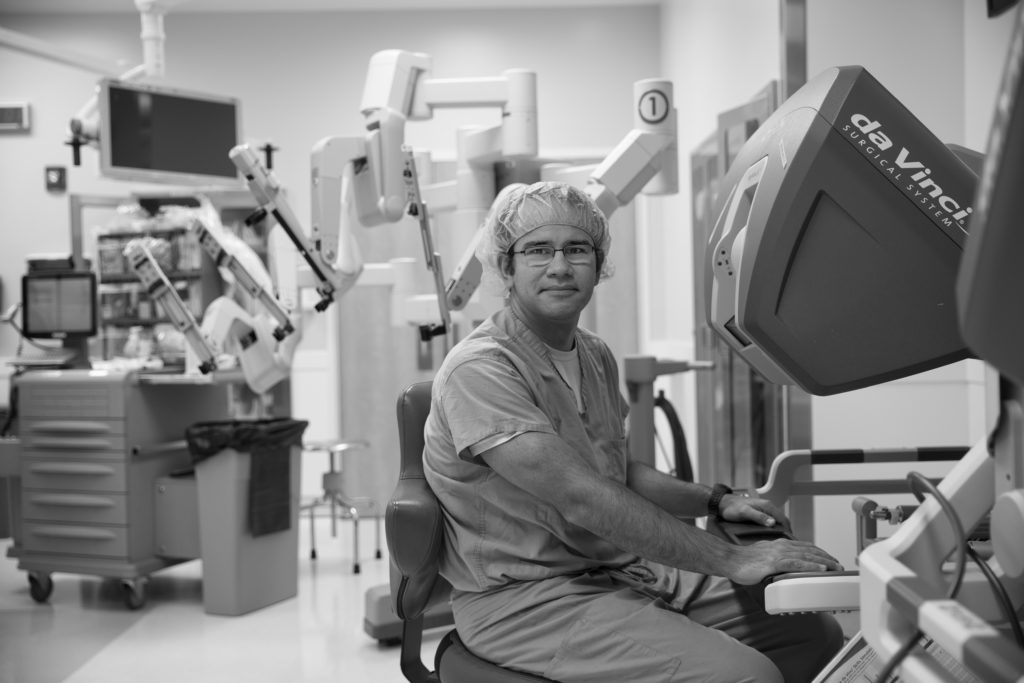When Functional Outcomes Are Achieved Post-Op, Do Patients and Families Care About Scarring?
When Functional Outcomes Are Achieved Post-Op, Do Patients and Families Care About Scarring? https://pediatricsnationwide.org/wp-content/uploads/2021/11/091317BS0041-1024x683.jpg 1024 683 Abbie Miller Abbie Miller https://pediatricsnationwide.org/wp-content/uploads/2023/05/051023BT016-Abbie-Crop.jpg- May 02, 2022
- Abbie Miller

A recent editorial from Dr. Daniel DaJusta questions whether cosmetic concerns after surgery are primarily driven by surgeons, patients or parents.
It is widely accepted that having a smaller, neater or less visible scar following surgery is a preferable cosmetic outcome to a large, ragged or highly visible scar. This is supported anecdotally by surgeons, patients and parents. It’s also supported by recent research published in The Journal of Urology.
In an editorial accompanying the study, Daniel DaJusta, MD, urologist at Nationwide Children’s Hospital, raises the question of perspective and how that influences the preferences and decisions of surgeons and patients.
“For patients who have noncosmetic surgeries with successful functional outcomes, do patients or families care about the scars?” he asks.
The short answer is probably not. But the reality also isn’t that simple.
For families who are faced with the choice between the functional outcome and a scar, the outcome seems to be assuredly the higher priority. However, if the family is faced with a choice between two approaches with similar assumed functional outcome, for example a minimally invasive approach with less scarring and a conventional open approach with more scarring, the cosmetic advantage seems to win out.
“Based on the results presented by Filippo Ghidini and team, we can certainly say that if a procedure is successful, it is likely the patient/family will accept the scar and be overall satisfied with their outcome, regardless of the technique used,” he explains.
However, Dr. DaJusta adds that in two other studies, patients and parents are more satisfied with a laparoscopic incision outcome if they knew about it and had seen how the two approaches would look after the procedure.
Notably, Dr. DaJusta points out that in some cases, it’s not just about the size of the scar—location matters. For example, in pyeloplasty, the open technique involves an incision at the flank, out of the direct view of the patient looking down at their abdomen. The location of the incision could have influenced the high rates of satisfaction. For example, the laparoscopic approach can lead to several small scars that are visible to the patient when they look down at their abdomen. Compared to one mid-sized scar hidden at the flank or side, where it is not in the line of sight the patient looking down at their body, the conventional surgery may be cosmetically preferred.
Additionally, even the choice of glue versus sutures for closing techniques may affect patient, parent and surgeon satisfaction with the cosmetic outcome.
“Perhaps we surgeons have always been the most concerned with the incision appearance and size,” Dr. DaJusta says. “Since the advent of minimally invasive surgery, we’ve continued to focus on making even open procedures successful with smaller, less noticeable incisions.”
It’s ultimately reassuring that patient satisfaction seems to be more derived from positive functional outcomes rather than cosmetic outcomes, he concludes.
“However, including education for patients and parents about likely cosmetic outcomes in addition to counseling on functional outcomes and possible complication rates is an important part of the initial surgery conversation,” says Dr. DaJusta. “By focusing on the whole picture, we can achieve the highest levels of satisfaction for surgeons, parents and patients.”
References:
- Ghidini F, Borot G, Gnech M, Contini G, Escolino M, Esposito C, Capozza N, Berrettini A, Masieri L, Castagnetti M. Comparison of cosmetic results in children >10 years old undergoing open, laparoscopic or robotic-assisted pyeloplasty: A multicentric study. The Journal of Urology. 1 May 2022.
- DaJusta DG. Incision looks, to whom it may concern: Parents, patient or surgeon. The Journal of Urology. 1 May 2022.
About the author
Abbie (Roth) Miller, MWC, is a passionate communicator of science. As the manager, medical and science content, at Nationwide Children’s Hospital, she shares stories about innovative research and discovery with audiences ranging from parents to preeminent researchers and leaders. Before coming to Nationwide Children’s, Abbie used her communication skills to engage audiences with a wide variety of science topics. She is a Medical Writer Certified®, credentialed by the American Medical Writers Association.
-
Abbie Millerhttps://pediatricsnationwide.org/author/abbie-miller/
-
Abbie Millerhttps://pediatricsnationwide.org/author/abbie-miller/
-
Abbie Millerhttps://pediatricsnationwide.org/author/abbie-miller/
-
Abbie Millerhttps://pediatricsnationwide.org/author/abbie-miller/







